Discover SpaceTime: Your Guide to Space & Astronomy
SpaceTime: Your Guide to Space & Astronomy

SpaceTime: Your Guide to Space & Astronomy
Author: Stuart Gary
Subscribed: 8,952Played: 353,661Subscribe
Share
© Copyright bitesz.com
Description
Join host Stuart Gary for weekly explorations into Astronomy, Space, and Science News, featuring insights from 19 years on Australian Public Radio and industry experts.
Become a supporter of this podcast: https://www.spreaker.com/podcast/spacetime-your-guide-to-space-astronomy--2458531/support.
Become a supporter of this podcast: https://www.spreaker.com/podcast/spacetime-your-guide-to-space-astronomy--2458531/support.
1137 Episodes
Reverse
In this episode of SpaceTime, we uncover the latest findings in Martian meteorology, delve into Earth's ancient tectonic activity, and prepare for humanity's return to the Moon.Raging Winds on Mars: Unveiling Martian Weather PatternsA groundbreaking study published in the journal Science Advances reveals that wind speeds on Mars can reach up to 160 km/h, significantly higher than earlier estimates. Lead author Valentin U.H. Meckel from the University of Bern discusses how these powerful winds, along with dust devils, play a crucial role in shaping Mars' climate and dust distribution. This episode explores how the observations from the European Space Agency’s Mars Express and ExoMars Trace Gas Orbiter have provided unprecedented insights into Martian atmospheric dynamics, which are essential for planning future manned missions to the Red Planet.Unlocking Earth's Deep Past: New Insights into SubductionIn a surprising twist to our understanding of early Earth, a new study published in Nature Communications suggests that subduction and continental crust formation occurred much earlier than previously believed. Researchers utilized advanced geochemical analysis of ancient olivine crystals to challenge the notion of a stagnant lid tectonic regime during the Hadean eon. This episode discusses the implications of these findings on our understanding of Earth's geological history and the processes that shaped our planet's surface.NASA's Artemis II: Preparing for Lunar ExplorationNASA is set to send astronauts back to the Moon with the Artemis II mission, slated for launch in early 2026. This episode provides an overview of the mission's objectives, including a ten-day crewed flyby of the Moon, which will test the Orion spacecraft and gather crucial scientific data. As the crew prepares to explore the lunar far side, we discuss the significance of this mission for future lunar habitation and potential manned missions to Mars.www.spacetimewithstuartgary.com✍️ Episode ReferencesScience Advanceshttps://www.science.org/journal/sciadvNature Communicationshttps://www.nature.com/ncomms/Become a supporter of this podcast: https://www.spreaker.com/podcast/spacetime-your-guide-to-space-astronomy--2458531/support.Raging Winds on Mars: Unveiling Martian Weather PatternsUnlocking Earth's Deep Past: New Insights into SubductionNASA's Artemis II: Preparing for Lunar Exploration(00:00) Wind speeds on Mars and their implications(12:45) New findings on early Earth's tectonic activity(21:15) NASA's Artemis II mission overview(30:00) Science report: Octopus handedness and air pollution effects on sleep apnea
In this episode of SpaceTime, we explore groundbreaking discoveries that reshape our understanding of Mars, the Moon, and the Milky Way Galaxy.Ancient Oceans on Mars: Geological Evidence RevealedA new study published in the journal Geophysical Research Letters presents compelling geological evidence that Mars' Northern Hemisphere was once home to a vast ocean. Lead author Chris from the University of Arkansas discusses how comparisons between river rocks on Earth and Martian sediment reveal ancient river deltas and backwater zones, suggesting that liquid water flowed on the Red Planet, increasing the possibility of past life. This episode delves into the processes of sedimentation and erosion that shaped Mars' landscape, providing insights into its watery past.The Moon's South Pole-Aitken Basin: Unveiling Impact MysteriesA fresh analysis of the Moon's largest impact crater, the South Pole-Aitken Basin, sheds light on its formation and the Moon's geological history. Researchers have discovered that this massive crater's shape indicates an impact from the north, challenging previous assumptions. As the Artemis missions prepare to land near this basin, they will have the opportunity to study material excavated from the lunar interior, potentially unlocking secrets about the Moon's evolution and the asymmetries in its crust.Nancy Chris Roman Space Telescope: Mapping the Milky WayNASA's upcoming Nancy Chris Roman Space Telescope is set to revolutionise our understanding of the Milky Way's interstellar medium. This mission will map around 20 billion stars, using infrared light to penetrate the dust clouds obscuring our view. Chief investigator Catherine Zucker explains how this data will refine our models of star formation and the galaxy's structure, while also addressing the ongoing mysteries of galactic spiral patterns and their role in star birth.www.spacetimewithstuartgary.com✍️ Episode ReferencesGeophysical Research Lettershttps://agupubs.onlinelibrary.wiley.com/journal/19448007Naturehttps://www.nature.com/natureNASA Nancy Chris Roman Space Telescopehttps://roman.gsfc.nasa.gov/Become a supporter of this podcast: https://www.spreaker.com/podcast/spacetime-your-guide-to-space-astronomy--2458531/support.Ancient Oceans on Mars: Geological Evidence RevealedThe Moon's South Pole-Aitken Basin: Unveiling Impact MysteriesNancy Chris Roman Space Telescope: Mapping the Milky Way(00:00) Evidence of ancient oceans on Mars(10:15) New insights into the Moon's largest impact crater(19:30) The upcoming Nancy Chris Roman Space Telescope mission(27:00) Science Robert: Heatwaves and their impact on global mortality
In this episode of SpaceTime, we delve into the intriguing world of near-Earth asteroids, the evolution of our universe, and the remarkable discovery of a rogue planet experiencing unprecedented growth.Invisible Asteroids Near Venus: A Hidden ThreatRecent computer simulations published in the journal Astronomy and Astrophysics have raised alarms about a population of near-Earth asteroids that remain undetectable due to their proximity to Venus. These Venusian co-orbital asteroids, which share an orbital resonance with Venus, could pose a collision risk to Earth within a few thousand years. The study's lead author, Valerio Carumba, explains the challenges of observing these asteroids, as they are obscured by the Sun's glare. With a size of around 300 metres, these asteroids could create impact craters several kilometres wide, highlighting the need for dedicated space missions to monitor this potential threat.The Universe's Evolution: New Insights from the Epoch of ReionizationAstronomers have made significant strides in understanding the universe's early days, revealing that it was warmer than previously thought before the first stars ignited. Research based on observations from the Murchison Wide Field Array in Western Australia indicates that the gas between galaxies was heated around 800 million years after the Big Bang, contradicting earlier theories of a cold universe. This heating, likely driven by early X-ray sources, set the stage for the epoch of reionization, which transformed the cosmos from opaque to transparent, allowing light to travel freely.A Richie Planet's Remarkable Growth SpurtIn a groundbreaking discovery, astronomers have identified a rogue planet, catalogued as char 11 oh 7 minus 7626, that is not bound to any star and is growing at an astonishing rate of 6 billion tonnes of gas and dust per second. Located approximately 600 light years away in the constellation Chameleon, this planet challenges conventional notions of planetary stability. Observations reveal that its accretion rate fluctuates dramatically, highlighting the dynamic processes at play in the formation of rogue planets and blurring the lines between planets and stars.www.spacetimewithstuartgary.com✍️ Episode ReferencesAstronomy and Astrophysicshttps://www.aanda.org/Astrophysical Journal Lettershttps://iopscience.iop.org/journal/2041-8205Become a supporter of this podcast: https://www.spreaker.com/podcast/spacetime-your-guide-to-space-astronomy--2458531/support.Invisible Asteroids Near Venus: A Hidden ThreatThe Universe's Evolution: New Insights from the Epoch of ReionizationA Richie Planet's Remarkable Growth Spurt(00:00) The threat posed by invisible asteroids near Venus(10:30) New findings on the universe's warm early phase(19:00) Discovery of a rogue planet growing at record rates(27:15) Science Robert: 2025 Nobel Prize announcements
In this episode of SpaceTime, we uncover the latest revelations in astrophysics, including the intriguing prospect of supermassive dark stars, Australia's ambitious lunar rover mission, and fresh insights into the formation of our solar system.Supermassive Dark Stars: A New Cosmic DiscoveryAstronomers have identified potential candidates for a new type of star in the early universe, known as supermassive dark stars. Recent observations from the Webb Space Telescope suggest that these stars, primarily composed of hydrogen and helium, are supported against gravitational collapse by dark matter. This episode delves into how these dark stars could help explain the existence of supermassive black holes and the unexpectedly bright distant galaxies observed by Webb. With the possibility of a smoking gun signature in their spectra, the implications of this discovery could reshape our understanding of dark matter and stellar evolution.Australia's Lunar Rover Mission: A Step Towards the MoonWork is underway on Australia's first lunar rover, set to launch as part of NASA's Artemis programme. This 20-kilogram robotic vehicle, developed by the Queensland University of Technology, will explore lunar geology and contribute to establishing a sustainable human presence on the Moon. The episode covers the rover's design, mission objectives, and the collaborative efforts between Australian institutions and NASA to advance lunar exploration.Piecing Together the Early Solar SystemNew research published in Science Advances reveals that the early solar system was more chaotic than previously thought, with planets forming from recycled fragments of shattered bodies rather than pristine materials. This episode discusses the violent origins of our solar system and how high-energy collisions influenced the development of planetary cores, ultimately shaping the celestial bodies we know today.www.spacetimewithstuartgary.com✍️ Episode ReferencesJournal of Physical Review Lettershttps://journals.aps.org/prl/Science Advanceshttps://www.science.org/journal/sciadvBecome a supporter of this podcast: https://www.spreaker.com/podcast/spacetime-your-guide-to-space-astronomy--2458531/support.Supermassive Dark Stars: A New Cosmic DiscoveryAustralia's Lunar Rover Mission: A Step Towards the MoonPiecing Together the Early Solar System(00:00) The potential discovery of supermassive dark stars(10:15) Australia's new lunar rover mission details(18:45) New findings on the chaotic origins of the solar system(25:30) Skywatch for October: Meteor showers and celestial highlights
In this episode of SpaceTime, we dive into the fascinating findings from Saturn's icy moon Enceladus, discuss delays in the Dream Chaser spaceplane's launch schedule, and celebrate NASA's breakthroughs in laser communications for deep space missions.Enceladus: Unveiling Complex ChemistryRecent discoveries reported in the journal Nature Astronomy reveal that Saturn's moon Enceladus is spewing complex organic molecules from its subsurface ocean. Data collected by the Cassini spacecraft during its mission has unveiled fresh insights into the chemical reactions occurring in this hidden ocean. The presence of organic molecules, including precursors for amino acids, raises the possibility that Enceladus may have once harboured conditions suitable for life. This episode explores how these findings could inform future missions aimed at further investigating Enceladus and its potential habitability.Dream Chaser Spaceplane: A Delay in LaunchSierra Space has announced that their Dream Chaser spaceplane's first free flight demonstration has been pushed back to late 2026. Originally designed as a manned spacecraft, Dream Chaser will now serve as a cargo transport for NASA's Commercial Resupply Services, delivering supplies to the International Space Station. The episode discusses the spaceplane's unique design, its cargo capabilities, and the future of its missions, including plans for a fully operational crewed version.Nasa's Optical Deep Space Laser Communications SuccessNASA's new Optical Deep Space Laser Communications project has surpassed all technical goals, paving the way for high-speed communications for future crewed missions to Mars. The technology, which successfully transmitted data over vast distances, demonstrated data rates comparable to broadband Internet services. This breakthrough enables faster communication for astronauts and could revolutionise data transmission in deep space. Tune in to learn more about the technology behind this ambitious project and its implications for future space exploration.www.spacetimewithstuartgary.com✍️ Episode ReferencesNature Astronomyhttps://www.nature.com/natureastronomyNASA Dream Chaserhttps://www.nasa.gov/dreamchaserNASA Optical Deep Space Laser Communicationshttps://www.nasa.gov/lasercomBecome a supporter of this podcast: https://www.spreaker.com/podcast/spacetime-your-guide-to-space-astronomy--2458531/support.Enceladus: Unveiling Complex ChemistryDream Chaser Spaceplane: A Delay in LaunchNASA's Optical Deep Space Laser Communications Success(00:00) The Dream Chaser spaceplane set for another delay(00:48) Scientists have discovered new complex organic molecules spewing from Saturn's Enceladus(09:41) NASA says new optical Deep Space Laser communications project has exceeded all technical goals(17:29) Around a quarter of all press releases in the United States are probably AI generated(19:23) Companies failing to secure AI agents is causing security risks, warns expert(20:27) Gary Stuart says AI agents can be hacked and should be treated like humans
In this episode of SpaceTime, we explore the future of our universe, the latest advancements in mapping our Milky Way, and the pivotal role fungi played in the evolution of life on land.The Universe's Fate: A Big Crunch in 20 Billion YearsA groundbreaking study published in the Journal of Cosmology and Astroparticle Physics reveals that the universe is approaching the midpoint of its 33 billion-year lifespan and may end in approximately 20 billion years. Lead author Henry Tighe from Cornell University presents new data suggesting that the universe's cosmological constant may be negative, leading to a contraction and eventual collapse—a phenomenon referred to as the "big crunch." This research, based on observations from the Dark Energy Survey and the dark energy spectroscopic instrument DESI, challenges long-held beliefs about the universe's eternal expansion and opens new avenues for understanding cosmic evolution.Mapping the Milky Way: Gaia's 3D ViewThe European Space Agency's Gaia Space Telescope has unveiled the most precise three-dimensional map of star-forming regions within our Milky Way galaxy. By analysing data from 44 million stars, Gaia has provided insights into the obscured molecular clouds where new stars are born. This innovative mapping technique allows astronomers to understand the distribution of ionised gas and the dynamics of star formation, offering a fresh perspective on our galaxy's structure and the processes that shape it.Fungi: The Pioneers of Terrestrial LifeA recent study published in Nature Ecology and Evolution has identified that fungi played a crucial role in preparing Earth for life on land between 900 million and 1.4 billion years ago—much earlier than previously thought. Researchers from the Okinawa Institute of Science and Technology utilised a novel gene swap method to trace the evolution of fungi, suggesting that these organisms were instrumental in creating the first ecosystems and nutrient recycling processes that facilitated the emergence of terrestrial life. This discovery reframes our understanding of the timeline for life on Earth and highlights the importance of fungi in shaping our planet's biosphere.www.spacetimewithstuartgary.com✍️ Episode ReferencesJournal of Cosmology and Astroparticle Physicshttps://www.cosmos.esa.int/web/gaiaNature Ecology and Evolutionhttps://www.nature.com/neweBecome a supporter of this podcast: https://www.spreaker.com/podcast/spacetime-your-guide-to-space-astronomy--2458531/support.The Universe's Fate: A Big Crunch in 20 Billion YearsMapping the Milky Way: Gaia's 3D ViewFungi: The Pioneers of Terrestrial Life
In this episode of SpaceTime, we delve into the intriguing potential for life on the dwarf planet Ceres, explore NASA's latest mission to study the heliosphere, and celebrate the achievements of the University of Melbourne's Spirit Nanosat.Ceres: A Potentially Habitable World?Recent research published in Science Advances suggests that Ceres, currently a frigid and frozen world, may have once harboured conditions suitable for life. By modelling the planet's thermal and chemical history, scientists propose that Ceres could have sustained a long-lasting energy source, allowing for microbial metabolism. While there's no direct evidence of life, the findings indicate that Ceres had the necessary ingredients—water, carbon, and chemical energy—that could have supported single-celled organisms in its ancient past.Nasa's New Heliospheric MissionNASA has launched the Interstellar Mapping and Acceleration Probe (IMAP) to investigate the heliosphere, the magnetic bubble surrounding our solar system. This mission aims to enhance our understanding of solar wind and its interactions with interstellar particles, which are crucial for assessing space weather impacts on Earth. IMAP will operate alongside the Carruthers Geocorona Observatory and NOAA's Swifo L1 spacecraft, contributing to a comprehensive study of our solar environment.Spirit Nanosat's Milestone AchievementThe University of Melbourne's Spirit nanosatellite has successfully completed its initial mission phase, deploying its thermal management system and taking a selfie in space. Launched in December 2023, Spirit is equipped with a miniaturised gamma-ray detector to search for gamma-ray bursts, marking a significant advancement in small satellite technology and scientific exploration.www.spacetimewithstuartgary.com✍️ Episode ReferencesScience Advanceshttps://www.science.org/journal/sciadvNASA IMAP Missionhttps://www.nasa.gov/imapUniversity of Melbourne Spirit Nanosatellitehttps://www.unimelb.edu.au/Become a supporter of this podcast: https://www.spreaker.com/podcast/spacetime-your-guide-to-space-astronomy--2458531/support.Ceres: A Potentially Habitable World?NASA's New Heliospheric MissionSpirit Nanosat's Milestone Achievement(00:00) New study claims the dwarf planet Ceres could once have been habitable enough for life(05:14) The Interstellar Mapping and Acceleration Probe will study the heliosphere(15:58) New study finds tropical fish are colonising new habitats because of ocean warming(18:07) Khloe Kardashian reportedly claims she's seen UFOs and experienced paranormal activity
(00:00:00) Mercury's Shrinking Secrets: Insights into the Solar System's Smallest Planet
(00:00:43) Mercury's Ongoing Shrinkage
(00:03:11) NASA's Carruthers Geocorona Observatory
(00:11:52) Insights from Martian Meteorite NWA 16254
(00:14:23) Tech News
In this episode of SpaceTime, we explore the intriguing dynamics of Mercury's shrinking size, embark on a mission to unveil Earth's elusive exosphere, and uncover the secrets of ancient volcanic activity on Mars.Mercury's Ongoing ShrinkageRecent research published in AGU Advances reveals that Mercury continues to shrink as it cools, a process that has been ongoing since its formation 4.6 billion years ago. Scientists have estimated that the planet's radius has contracted by between 2.7 to 5.6 kilometres due to cooling-induced faulting. This study employs new methods to provide a more accurate understanding of Mercury's long-term thermal history, which could also be applied to other planetary bodies, including Mars.NASA's Carruthers Geocorona ObservatoryNASA has launched the Carruthers Geocorona Observatory to study Earth's invisible halo, the exosphere. This mission aims to capture the first continuous observations of the Geocorona, revealing the dynamics of hydrogen atoms escaping into space. Understanding the exosphere's response to solar activity is crucial for predicting space weather events that could affect astronauts on missions to the Moon and beyond. The observatory will provide insights into how Earth retains water and may even aid in the search for exoplanets with similar atmospheric conditions.Insights from Martian Meteorite NWA 16254A meteorite discovered in the Zaharov Desert is shedding light on Mars's ancient volcanic systems. The rock, classified as NWA 16254, offers unprecedented insights into the planet's magmatic processes, indicating a two-stage crystallisation process that occurred under varying pressure conditions. This discovery could help scientists understand Mars's thermal history and its volcanic evolution over billions of years, raising questions about the planet's past and its potential for hosting life.www.spacetimewithstuartgary.com✍️ Episode ReferencesAGU Advanceshttps://agu.onlinelibrary.wiley.com/journal/23337380NASA Geocorona Observatoryhttps://www.nasa.gov/Planetary Science Journalhttps://iopscience.iop.org/journal/2632-3338Become a supporter of this podcast: https://www.spreaker.com/podcast/spacetime-space-astronomy--2458531/support.Mercury's Ongoing ShrinkageNASA's Carruthers Geocorona ObservatoryInsights from Martian Meteorite NWA 16254
(00:00:00) Stardust from Beyond: Unveiling the Secrets of Asteroid Bennu and Saturn's Mysteries
(00:00:47) Scientists have discovered minerals older than our solar system embedded in asteroid Bennu
(00:10:22) Scientists using NASA's Webb telescope have uncovered mysterious features in Saturn's atmosphere
(00:14:58) NASA's Parker Solar Probe completes 25th close approach to the sun
(00:17:27) The Science Report
In this episode of Space Time, we uncover groundbreaking discoveries that challenge our understanding of the cosmos. Join Stuart Gary as he discusses the astonishing findings from the asteroid Bennu, revealing minerals older than our solar system itself. Delve into the unexpected features observed in Saturn's atmosphere and learn about the Parker Solar Probe's close flyby of the Sun. This episode is packed with insights that could reshape our knowledge of planetary formation and cosmic history.Chapters:(00:00) This is space time series 28 episode 117 for broadcast on 29 September 2025(00:47) Scientists have discovered minerals older than our solar system embedded in asteroid Bennu(10:13) Scientists using NASA's Webb telescope have uncovered mysterious features in Saturn's atmosphere(14:59) NASA's Parker Solar Probe completes 25th close approach to the sun(17:41) A widely reported study on apple cider vinegar and weight loss has been retractedBecome a supporter of this podcast: https://www.spreaker.com/podcast/spacetime-your-guide-to-space-astronomy--2458531/support.
In this episode of SpaceTime, we dive into the cosmos to uncover the secrets of the early universe, explore the potential for black hole atmospheres, and examine the intriguing history of habitability on Mars, alongside the launch of a new deep space antenna by the European Space Agency.Mysterious Red Dots in the Early UniverseAstronomers have identified a population of enigmatic red dots in the early universe, potentially representing exotic stellar atmospheres around ancient black holes. These findings, published in Astronomy and Astrophysics, could bridge the gap in understanding the rapid growth of supermassive black holes. The Webb Space Telescope's observations suggest these objects might be a new class of celestial body, challenging existing models of galaxy formation and offering insights into the origins of galaxies.Multiple Episodes of Habitability on MarsNASA's Perseverance rover has provided compelling evidence that Mars's Jezero Crater experienced multiple episodes of liquid water flooding, each capable of supporting life. By analysing geochemical data, scientists have identified various minerals that reveal a dynamic history of volcanic activity and water interactions, suggesting a complex aqueous past that could have fostered life on the Red Planet.European Space Agency's New Deep Space DishThe European Space Agency is set to inaugurate its latest Australian deep space antenna at the Norcia tracking station in Western Australia. This 35-metre parabolic dish will enhance ESA's deep space communications capabilities, supporting missions and ensuring robust data transmission from spacecraft exploring our solar system. The new facility complements ESA's existing network of antennas worldwide, reinforcing their commitment to deep space exploration.www.spacetimewithstuartgary.com✍️ Episode ReferencesAstronomy and Astrophysicshttps://www.aanda.org/Journal of Geophysical Research Planetshttps://agupubs.onlinelibrary.wiley.com/journal/21699356European Space Agencyhttps://www.esa.int/Become a supporter of this podcast: https://www.spreaker.com/podcast/spacetime-space-astronomy--2458531/support.Mysterious Red Dots in the Early UniverseMultiple Episodes of Habitability on MarsEuropean Space Agency's New Deep Space Dish
In this episode of SpaceTime, we celebrate a major milestone in exoplanet discoveries, unravel the enigmatic surface of Venus, and delve into the intriguing tale of interstellar comet 3I ATLAS.Exoplanet Count Surpasses 6,000Astronomers have reached an impressive milestone, confirming their 6,000th exoplanet, a testament to the rapid pace of discoveries since the first detection of an exoplanet in 1995. This milestone not only highlights the evolving understanding of our galaxy but also raises questions about the myriad of planetary types discovered, from rocky planets to gas giants. While the hunt for Earth-like planets continues, the methods employed to discover these distant worlds remain a challenge, with fewer than 100 exoplanets directly imaged to date. The future holds promise with upcoming missions, including NASA's Nancy Chris Roman Space Telescope, which aims to further uncover the secrets of our cosmic neighbourhood.Decoding Venus's Mysterious SurfaceScientists are making strides in understanding the peculiar features of Venus, particularly the crown-like structures known as coronae. A new study suggests these features may be the result of magma plumes attempting to break through the planet's crust. By mapping the paths of these magmatic bursts, researchers are shedding light on Venus's geological history and its stark contrast to Earth, despite their similarities in size and formation. The findings could help explain why Venus has become a hellish environment, devoid of life, while Earth thrives.Interstellar Comet 3I ATLASAstronomers have captured stunning new images of interstellar comet 3I ATLAS, revealing a prominent tail and glowing coma as it journeys through the inner solar system. These observations provide valuable insights into the comet's composition and behaviour, suggesting that it shares similarities with comets originating from our own solar system. As 3I ATLAS approaches the Sun, its increasing activity offers a unique opportunity for scientists to study material that formed around distant stars. The comet is expected to re-emerge in November, promising further observations and discoveries.www.spacetimewithstuartgary.com✍️ Episode ReferencesNASA Exoplanet Science Institutehttps://exoplanets.nasa.gov/Proceedings of the National Academy of Scienceshttps://www.pnas.org/Gemini Observatoryhttps://www.gemini.edu/Become a supporter of this podcast: https://www.spreaker.com/podcast/spacetime-space-astronomy--2458531/support.Exoplanet Count Surpasses 6,000Decoding Venus's Mysterious SurfaceInterstellar Comet 3I ATLAS
In this episode of SpaceTime, we tackle the mysteries of the cosmos with a new mathematical model of the universe and ponder the age-old question: are we alone in the universe?New Model of the UniverseScientists have unveiled a groundbreaking mathematical model aimed at simplifying our understanding of the universe's evolution over the past 13.8 billion years. This innovative research, based on data from the Dark Energy Spectroscopic Instrument (DESI), offers fresh insights into the cosmic web's structure, revealing how dark energy influences cosmic expansion. Lead author Leonardo Gianni from the University of Queensland discusses how this model challenges existing paradigms and provides a clearer picture of the universe's complex behaviour, including the impact of voids and collapsing regions of matter.Are We Alone?A new study presented at the European Planetary Science Congress raises intriguing questions about the existence of intelligent alien civilizations. Researchers estimate that the nearest technological society in our galaxy could be over 33,000 light years away, with conditions on their home planets potentially mirroring those of Earth. The study highlights the challenges of sustaining advanced life and the long timelines required for such civilizations to coexist with humanity.Partial Solar EclipseToday, a partial solar eclipse graced the skies over New Zealand, the South Pacific, and parts of Australia and Antarctica. As the Moon passed between the Earth and the Sun, observers witnessed a stunning celestial display with up to 70% of the Sun's face obscured. This remarkable event serves as a reminder of the intricate dance of celestial bodies that shape our night sky.www.spacetimewithstuartgary.com✍️ Episode ReferencesPhysical Review Lettershttps://journals.aps.org/prl/European Planetary Science Congresshttps://www.epsc2025.eu/Become a supporter of this podcast: https://www.spreaker.com/podcast/spacetime-space-astronomy--2458531/support.New Model of the UniverseAre We Alone?Partial Solar EclipseNew Model of the UniverseAre We Alone?Partial Solar Eclipse
In this episode of SpaceTime, we explore the thrilling prospects of observing exploding black holes, an astonishing stellar jet on the outskirts of the Milky Way, and the meticulous preparations for an Earth observation satellite mission.Exploding Black Holes on the HorizonA groundbreaking study suggests that astronomers may soon witness a black hole explosion, an event theorised to occur once every 100,000 years. Researchers now believe there’s a 90% chance of observing such an explosion within the next decade, potentially revealing primordial black holes formed shortly after the Big Bang. These explosions could provide a comprehensive catalogue of all subatomic particles, including those yet to be discovered, fundamentally altering our understanding of the universe's origins.Immense Stellar Jet DiscoveredAstronomers have identified a colossal stellar jet erupting from a young star in the Milky Way's outskirts, specifically in the Sharpless 2284 region. This rare phenomenon involves twin jets of hot plasma extending over eight light years, driven by superheated gases falling onto the massive star. Captured by NASA's Webb Space Telescope, this discovery not only sheds light on star formation but also offers insights into the conditions of the early universe.Preparing for Earth ObservationThe European Space Agency is conducting rigorous tests for a future Earth observation satellite mission, including an airborne campaign in the Arctic. Scientists are evaluating a new imaging microwave radiometer designed to monitor sea ice and its evolution. This mission aims to gather vital data on climate change and the Arctic environment, contributing to a better understanding of global phenomena.www.spacetimewithstuartgary.com✍️ Episode ReferencesPhysical Review Lettershttps://journals.aps.org/prl/NASAhttps://www.nasa.gov/European Space Agencyhttps://www.esa.int/Become a supporter of this podcast: https://www.spreaker.com/podcast/spacetime-space-astronomy--2458531/support.Exploding Black Holes on the HorizonImmense Stellar Jet DiscoveredPreparing for Earth Observation
In this episode of SpaceTime, we uncover the secrets of ancient geology, explore the watery past of an asteroid, and delve into the origins of globular clusters.Supercontinent Breakup RevealedScientists have made significant strides in understanding the breakup of the supercontinent Rodinia, which occurred over 800 million years ago. Research conducted on rare minerals in Outback Australia has revealed how niobium-rich carbonatites rose through fault zones during tectonic rifting, providing insights into the geological processes that shaped our planet. These findings not only illuminate the history of Rodinia but also highlight the importance of niobium in modern technologies, such as electric vehicles and advanced alloys.Water Activity on Asteroid RichieExciting new research confirms that liquid water once flowed on the parent body of the near-Earth asteroid Richie, challenging previous assumptions about water activity on asteroids. Analysis of rock samples returned by Japan's Hayabusa2 mission has shown evidence of water movement through Ryugu's rocks, indicating that carbon-rich asteroids may have played a more significant role in delivering water to Earth than previously thought. This discovery has profound implications for our understanding of planetary formation and the conditions that made Earth habitable.Origins of Globular ClustersAstronomers are closer to solving the mystery of globular clusters, dense stellar systems that have puzzled scientists for centuries. Recent high-resolution computer simulations have revealed multiple pathways for their formation, suggesting that some may originate from satellite dwarf galaxies stripped of their outer stars during galactic mergers. This breakthrough could lead to new insights into dark matter and the formation of the universe's earliest stars.www.spacetimewithstuartgary.com✍️ Episode ReferencesGeological Magazinehttps://www.tandfonline.com/journals/tgeo20Naturehttps://www.nature.com/Become a supporter of this podcast: https://www.spreaker.com/podcast/spacetime-space-astronomy--2458531/support.Supercontinent Breakup RevealedWater Activity on Asteroid RichieOrigins of Globular Clusters
In this episode of SpaceTime, we dive into groundbreaking discoveries on Mars, the intriguing atmosphere of Makemake, and the awe-inspiring total lunar eclipse that captivated millions.Potential Biosignatures on MarsNASA scientists have revealed that samples collected by the Perseverance rover from Jezero Crater may hold the best chance yet of uncovering evidence of past microbial life. The samples, taken from the rock formation known as Chiava Falls, exhibit characteristics that could indicate potential biosignatures. These findings suggest that Mars may have been habitable for longer than previously thought, challenging earlier assumptions about the planet's history.Atmosphere Discovered on MakemakeIn a remarkable discovery, astronomers have detected indications of a methane gas atmosphere on the distant dwarf planet Makemake. This finding, made using NASA's Webb Space Telescope, suggests the presence of a tenuous atmosphere or possibly cryovolcanic activity. Makemake, which resides in the Kuiper Belt, is now only the second known trans-Neptunian object, after Pluto, to have confirmed gaseous presence, revealing its dynamic nature and potential for active geology.Total Lunar EclipseA stunning total lunar eclipse has mesmerised observers across Australia, Europe, Africa, and Asia. This celestial event transformed the full moon into a blood-red spectacle as Earth’s shadow obscured it. The eclipse lasted over five hours, showcasing the beauty of orbital mechanics and providing a thrilling experience for stargazers.www.spacetimewithstuartgary.com✍️ Episode ReferencesNaturehttps://www.nature.com/Astrophysical Journal Lettershttps://iopscience.iop.org/journal/2041-8205Become a supporter of this podcast: https://www.spreaker.com/podcast/spacetime-space-astronomy--2458531/support.Potential Biosignatures on MarsAtmosphere Discovered on MakemakeTotal Lunar Eclipse
Sponsor Details:This episode of SpaceTime is brought to you with the support of Insta360. Capture your adventures with their latest game-changer, the GOUltra. For a special SpaceTime listener offer, visit store.insta360.com and use the promo code SPACETIME at checkout. Help support SpaceTime and get a great deal. Win/win!In this episode of SpaceTime, we explore fascinating insights into the origins of Earth's water, the launch of Israel's advanced spy satellite, and the development of a groundbreaking high-energy rocket fuel.About Earth's Water OriginsRecent findings suggest that the water in Comet 12P Pons-Brooks shares the same isotopic signature as Earth's oceans, bolstering the hypothesis that comets played a vital role in delivering water and essential ingredients for life to our planet. Observations from the Atacama Large Millimetre/Submillimeter Array telescope reveal that the deuterium to hydrogen ratio in the comet's water is remarkably similar to that found in Earth's oceans, providing compelling evidence that some Halley-type comets may have contributed to making Earth habitable.Israel's New Spy Satellite LaunchIsrael has successfully launched its Ofek 19 surveillance satellite to monitor terrorist activities across the Middle East. The satellite, equipped with advanced optical and radar systems, is designed to provide high-resolution imagery under various conditions. This launch comes amid ongoing tensions in the region, as Israel seeks to enhance its intelligence capabilities in response to recent attacks.Revolutionary High-Energy Rocket FuelScientists have synthesised a new high-energy compound, manganese diboride, which could revolutionise rocket fuel efficiency. This innovative fuel is over 20% more energetic by weight and 150% more energetic by volume than traditional aluminium-based fuels. The safety and efficiency of manganese diboride may significantly enhance payload capacities for space missions, paving the way for more ambitious exploration efforts.www.spacetimewithstuartgary.com✍️ Episode ReferencesNature Astronomyhttps://www.nature.com/nature-astronomy/Journal of the American Chemical Societyhttps://pubs.acs.org/journal/jacsatBecome a supporter of this podcast: https://www.spreaker.com/podcast/spacetime-space-astronomy--2458531/support.Nigel About Earth's Water OriginsIsrael's New Spy Satellite LaunchRevolutionary High-Energy Rocket Fuel
Sponsor Details:This episode of SpaceTime is brought to you with the support of Insta360. Capture your adventures with their latest game-changer, the GOUltra. For a special SpaceTime listener offer, visit store.insta360.com and use the promo code SPACETIME at checkout. Help support SpaceTime and get a great deal. Win/win!In this episode of SpaceTime, we delve into some astounding revelations in solar physics and planetary science, including the extreme temperatures of solar flares, new insights into the formation of Jupiter's core, and the tantalising possibility of life evolving on nearby exoplanets.Solar Flares Hotter Than Ever ImaginedRecent research has revealed that solar flares can reach temperatures exceeding 60 million degrees Celsius, a staggering six and a half times hotter than previously believed. This groundbreaking finding, published in the Astrophysical Journal Letters, may provide answers to a long-standing mystery regarding solar flare spectral lines. The study suggests that positively charged particles, or ions, are heated more intensely than electrons during these explosive events, leading to a significant revision of our understanding of solar flare dynamics.New Insights into Jupiter's Core FormationA new study challenges previous theories regarding the formation of Jupiter's core, suggesting that a giant impact may not be responsible for the planet's dilute core structure. Instead, it appears that Jupiter's core formed gradually through the absorption of heavy and light materials during its evolution. This revelation, supported by advanced computer simulations, indicates that the core does not have a distinct boundary but rather blends smoothly into the surrounding hydrogen layers, reshaping our understanding of gas giant formation.Could Life Thrive on Nearby Exoplanets?Exciting new research posits that life may be evolving right now on some of Earth's nearest exoplanets, despite the high levels of radiation they receive. Scientists have drawn parallels between the harsh conditions on these exoplanets and early Earth, where life first emerged amidst extreme ultraviolet radiation. This research highlights the potential for habitability on planets like Proxima b, igniting further interest in the search for extraterrestrial life.www.spacetimewithstuartgary.com✍️ Episode ReferencesAstrophysical Journal Lettershttps://iopscience.iop.org/journal/2041-8205Monthly Notices of the Royal Astronomical Societyhttps://academic.oup.com/mnrasCornell Universityhttps://www.cornell.edu/Become a supporter of this podcast: https://www.spreaker.com/podcast/spacetime-space-astronomy--2458531/support.Solar Flares Hotter Than Ever ImaginedNew Insights into Jupiter's Core FormationCould Life Thrive on Nearby Exoplanets?
Sponsor Details:This episode of SpaceTime is brought to you with the support of Insta360. Capture your adventures with their latest game-changer, the GOUltra. For a special SpaceTime listener offer, visit store.insta360.com and use the promo code SPACETIME at checkout. Help support SpaceTime and get a great deal. Win/win!In this episode of SpaceTime, we uncover groundbreaking discoveries in planetary science and solar physics, including the remnants of ancient asteroids on Mars, the recovery of the Mother's Day meteorite, and new insights into solar energetic particles.Asteroid Remnants Found in Martian MantleA new study reveals that fragments from ancient asteroids, which significantly impacted Mars around 4.5 billion years ago, are now trapped within the planet's mantle. Data from NASA's Mars Insight lander has provided unprecedented insights into the Martian interior, showing that these remnants, some up to four kilometres wide, offer a unique glimpse into Mars' geological history. The findings suggest a sluggish evolution of the Martian mantle, contrasting sharply with Earth's dynamic tectonic processes.Mother's Day Meteorite DiscoveryIn an exciting expedition, scientists from Curtin University have successfully recovered a meteorite that lit up the skies over Western Australia on Mother's Day. Using the Desert Fireball Network, researchers pinpointed the meteor's landing site and undertook a challenging journey to retrieve samples. Preliminary analysis indicates that the meteorite is an ordinary chondrite, providing valuable insights into its origins and the solar system's history.Tracing Super Fast Electrons from the SunAstronomers have identified two distinct origins for energetic particles emitted by the Sun, thanks to observations from the European Space Agency's Solar Orbiter mission. The research highlights the difference between solar energetic electrons linked to solar flares and those associated with coronal mass ejections. Understanding these two types of solar energetic particles is crucial for predicting space weather and protecting satellites and astronauts from radiation hazards.www.spacetimewithstuartgary.com✍️ Episode ReferencesNASAhttps://www.nasa.gov/Curtin Universityhttps://www.curtin.edu.au/European Space Agencyhttps://www.esa.int/Become a supporter of this podcast: https://www.spreaker.com/podcast/spacetime-space-astronomy--2458531/support.
In this episode of SpaceTime, we uncover some of the most exciting discoveries and developments in the universe, including the detection of the brightest fast radio burst ever observed, the New Horizons spacecraft's record-setting hibernation, and an innovative method for generating oxygen in space.Brightest Fast Radio Burst DetectedAstronomers have identified what is being hailed as the brightest fast radio burst (FRB) ever recorded. Catalogued as FRB 2025 0316A, this extraordinary flash of energy was detected 130 million light years away in the spiral galaxy NGC 4141. The burst's unprecedented brightness and proximity provide scientists with a unique opportunity to study its origins and the environment surrounding it, potentially shedding light on the enigmatic sources of these fleeting cosmic phenomena.New Horizons Enters Record HibernationNASA's New Horizons spacecraft has officially begun a record-setting hibernation period as it journeys through the Kuiper Belt, now over 9.2 billion kilometres from Earth. This hibernation will last until June 2026, surpassing its previous record of 273 days. Despite being in hibernation, the spacecraft will continue to collect valuable data on charged particles and dust in the outer heliosphere, which will be transmitted back to Earth upon reactivation.Revolutionary Oxygen Generation in SpaceIn a significant advancement for future space missions, scientists have developed a new method for generating oxygen in space using neodymium magnets to enhance the electrolysis process. This innovative approach simplifies the extraction of oxygen bubbles from water, potentially replacing complex systems currently used in microgravity environments. By leveraging magnetic forces, this technique could improve the efficiency and reliability of oxygen production for astronauts.www.spacetimewithstuartgary.com✍️ Episode ReferencesAstrophysical Journal Lettershttps://iopscience.iop.org/journal/2041-8205NASAhttps://www.nasa.gov/Nature Chemistryhttps://www.nature.com/nchem/Become a supporter of this podcast: https://www.spreaker.com/podcast/spacetime-space-astronomy--2458531/support.Brightest Fast Radio Burst DetectedNew Horizons Enters Record HibernationRevolutionary Oxygen Generation in Space
In this episode of SpaceTime, we explore the latest developments in space exploration, including the European Space Agency's Juice mission, NASA's Psyche spacecraft, and groundbreaking advancements in lunar resource utilization.Juice Mission Back on TrackThe European Space Agency's Jupiter Icy Moons Explorer, Juice, is set for a critical flyby of Venus after overcoming a communications anomaly that temporarily severed contact with Earth. Engineers successfully restored communication with the spacecraft, which is now on its way to study Jupiter's Galilean moons—Ganymede, Callisto, and Europa—believed to harbor subsurface oceans that may support extraterrestrial life. The flyby will assist Juice in gaining the necessary speed for its journey to Jupiter, scheduled for arrival in 2031.Psyche Spacecraft CalibrationNASA's Psyche spacecraft, launched in 2023, has successfully calibrated its onboard cameras as it journeys toward the metal-rich asteroid of the same name. The spacecraft aims to unlock the secrets of planetary cores and will utilize its cameras to capture images of Psyche's surface when it arrives in 2029. The calibration process includes imaging Earth and Mars to ensure the instruments perform optimally for their scientific objectives.Creating Resources from Moon DustIn a significant breakthrough, scientists have developed a method to produce water, oxygen, and methane fuel using lunar regolith, sunlight, and carbon dioxide from astronauts' breath. This innovation could drastically reduce the cost of transporting supplies from Earth to the Moon, paving the way for sustainable lunar bases and expanded space exploration capabilities.www.spacetimewithstuartgary.com✍️ Episode ReferencesEuropean Space Agencyhttps://www.esa.int/NASAhttps://www.nasa.gov/Become a supporter of this podcast: https://www.spreaker.com/podcast/spacetime-space-astronomy--2458531/support.Juice Mission Back on TrackPsyche Spacecraft CalibrationCreating Resources from Moon Dust






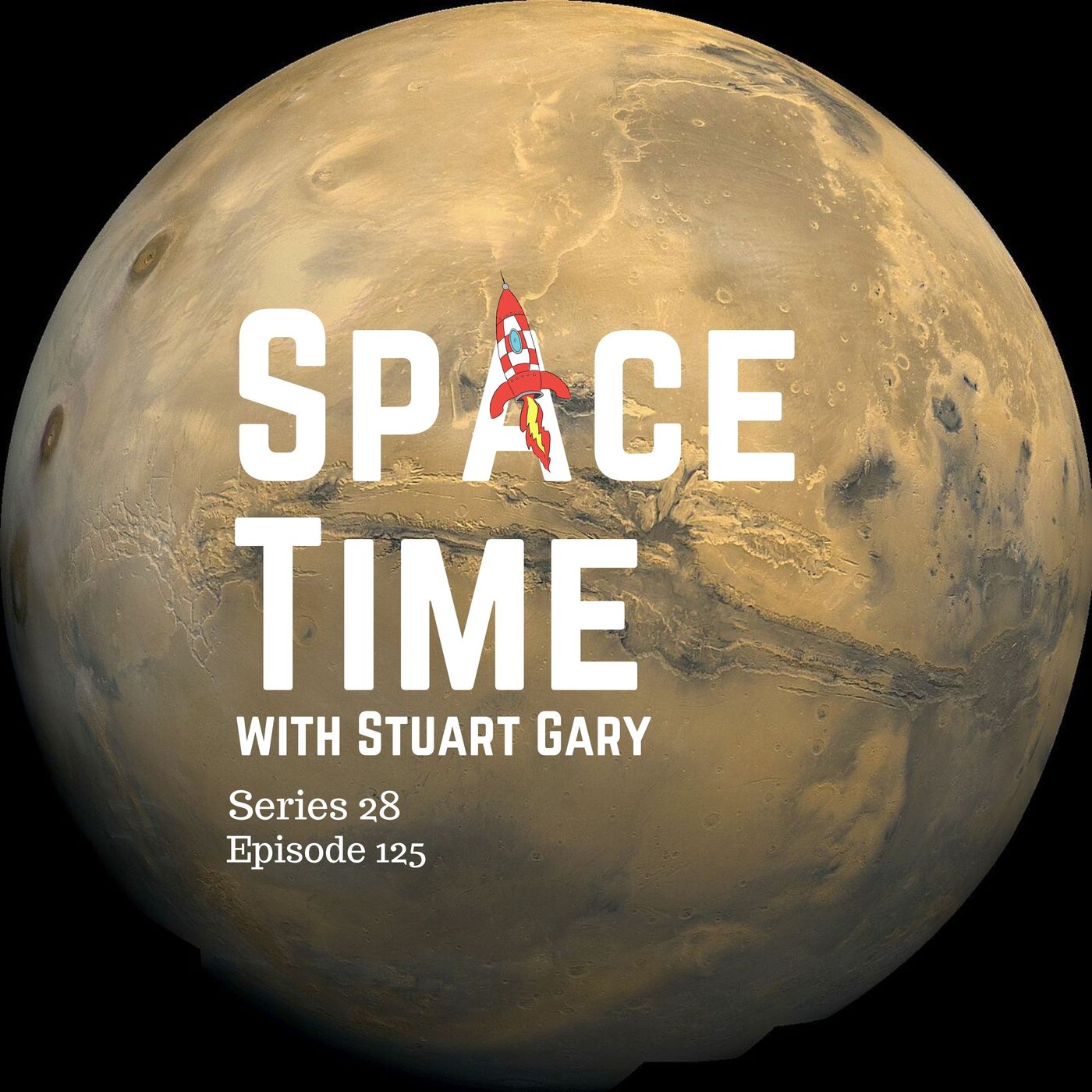
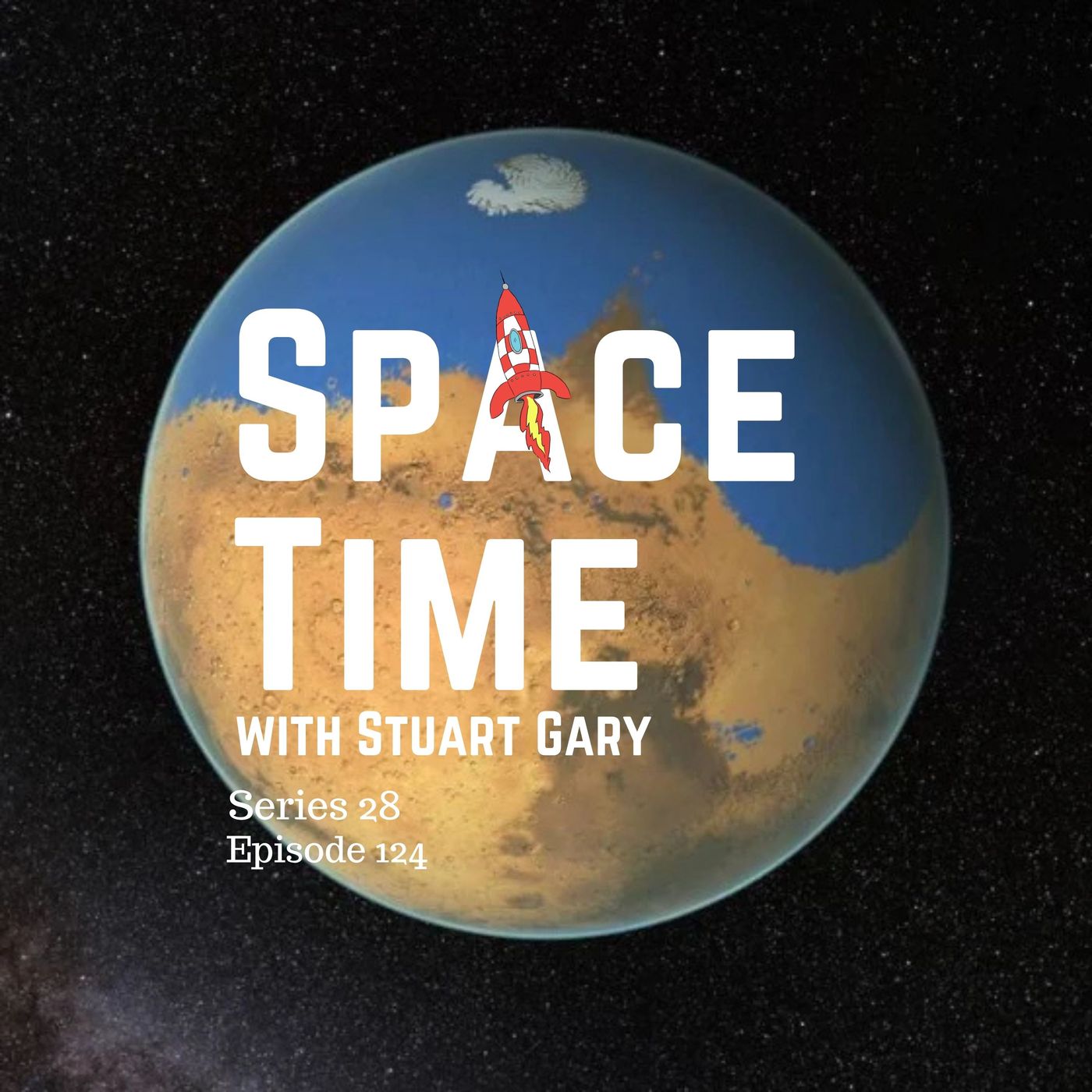

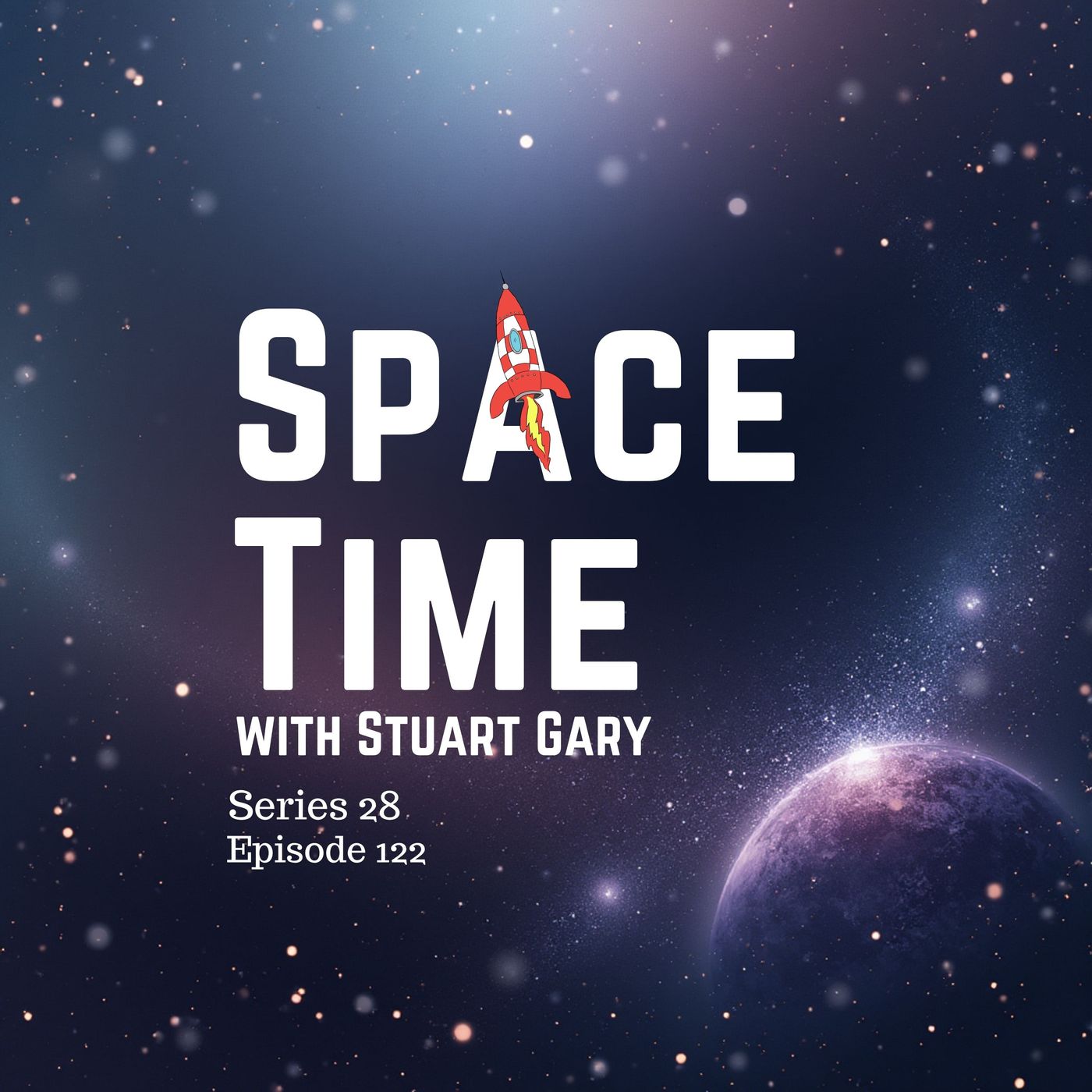

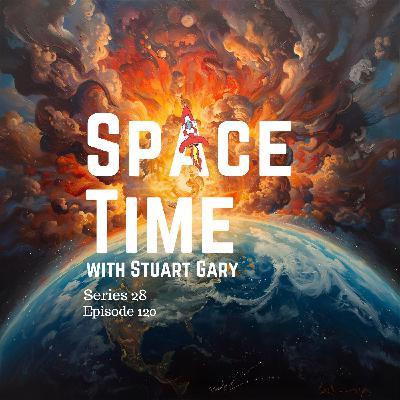
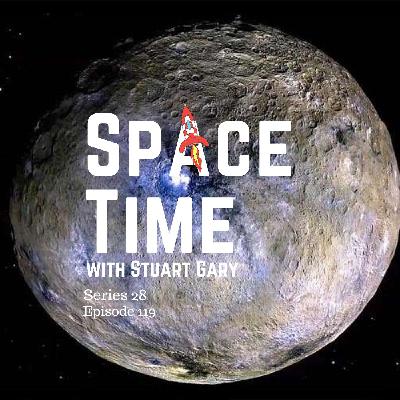
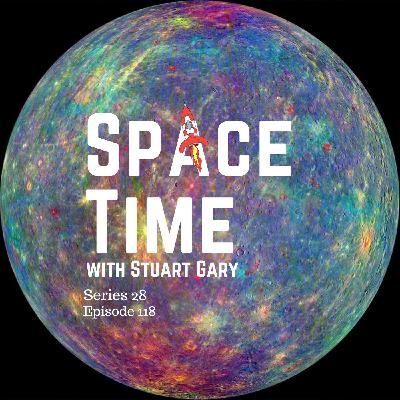

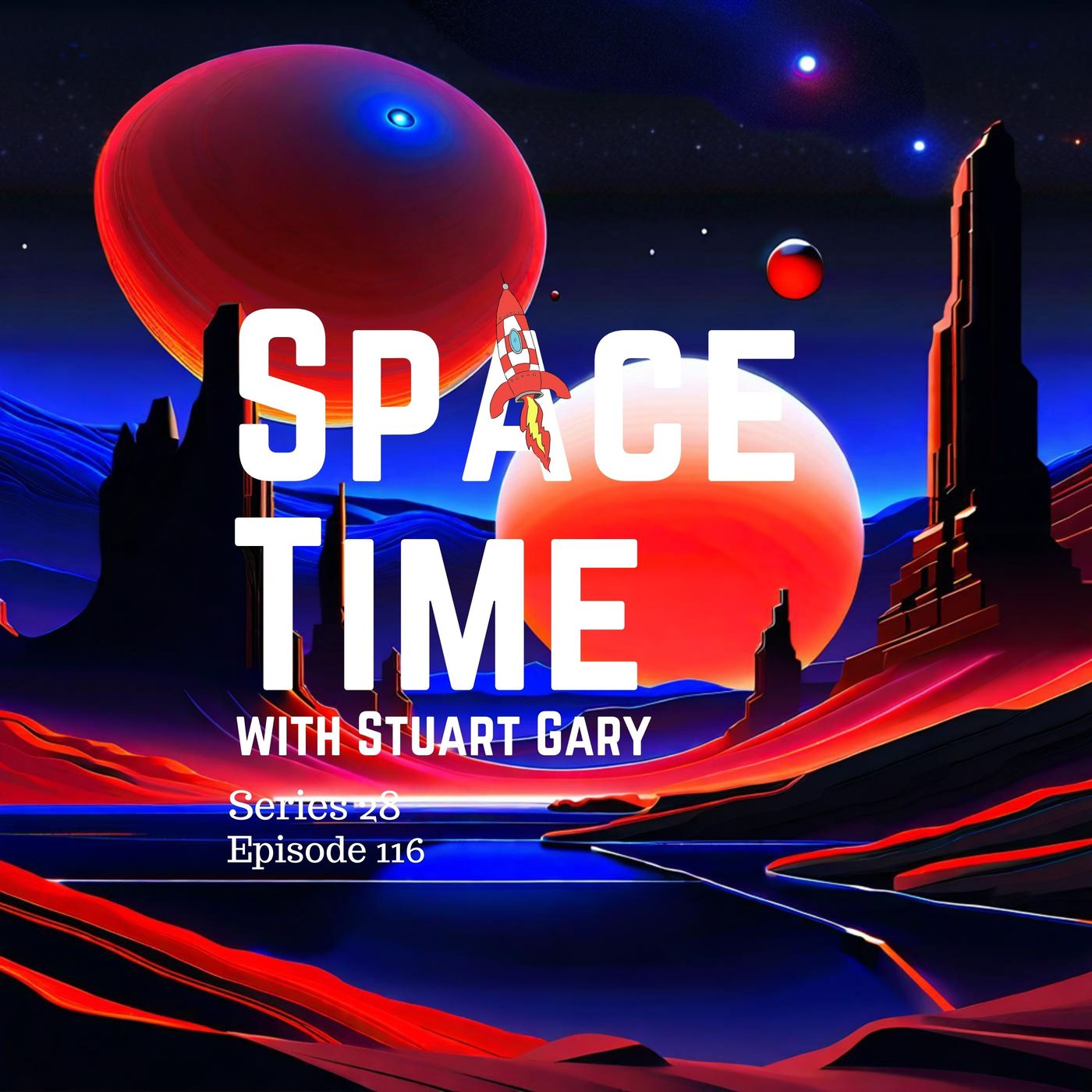

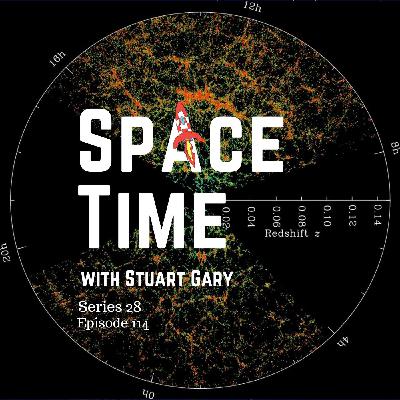
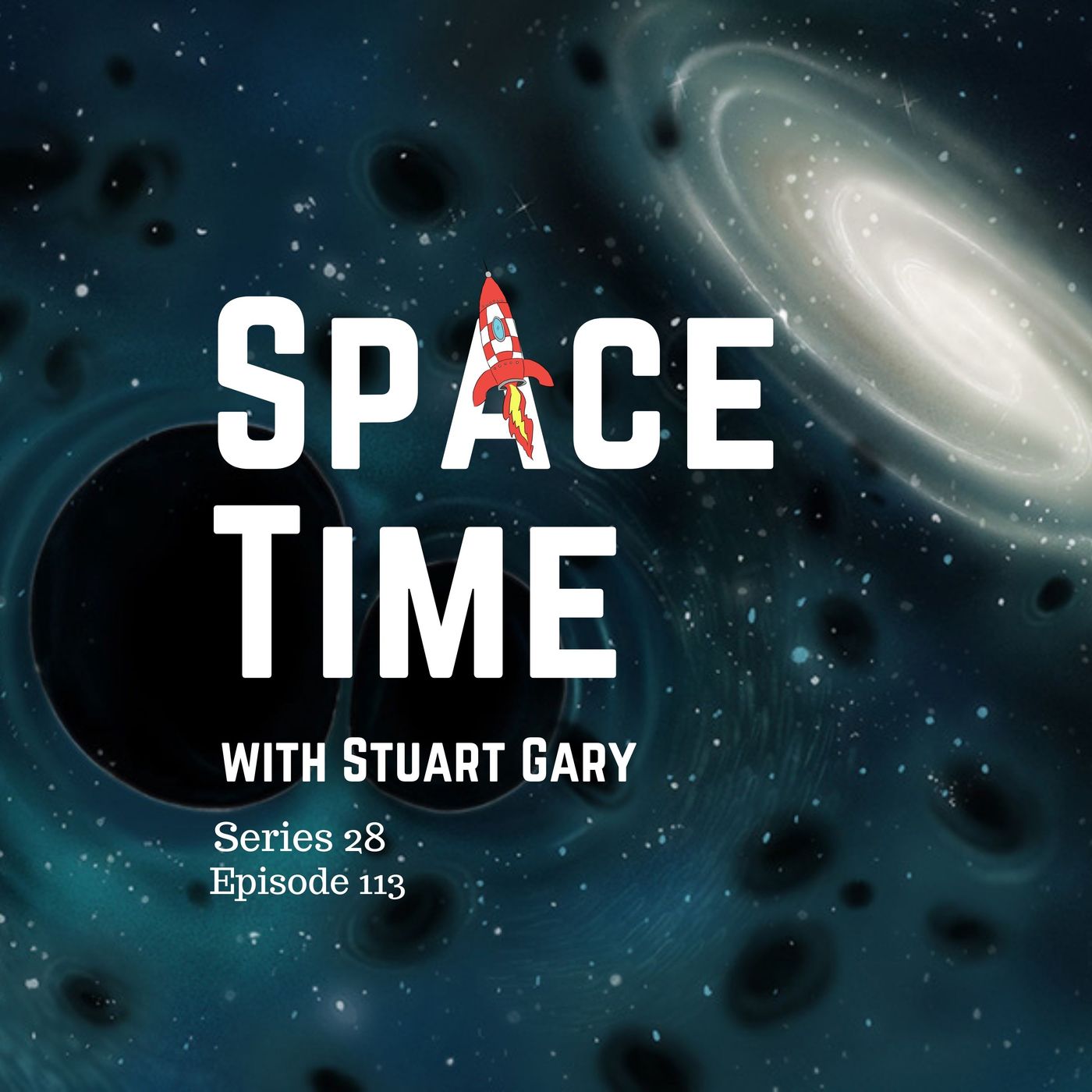
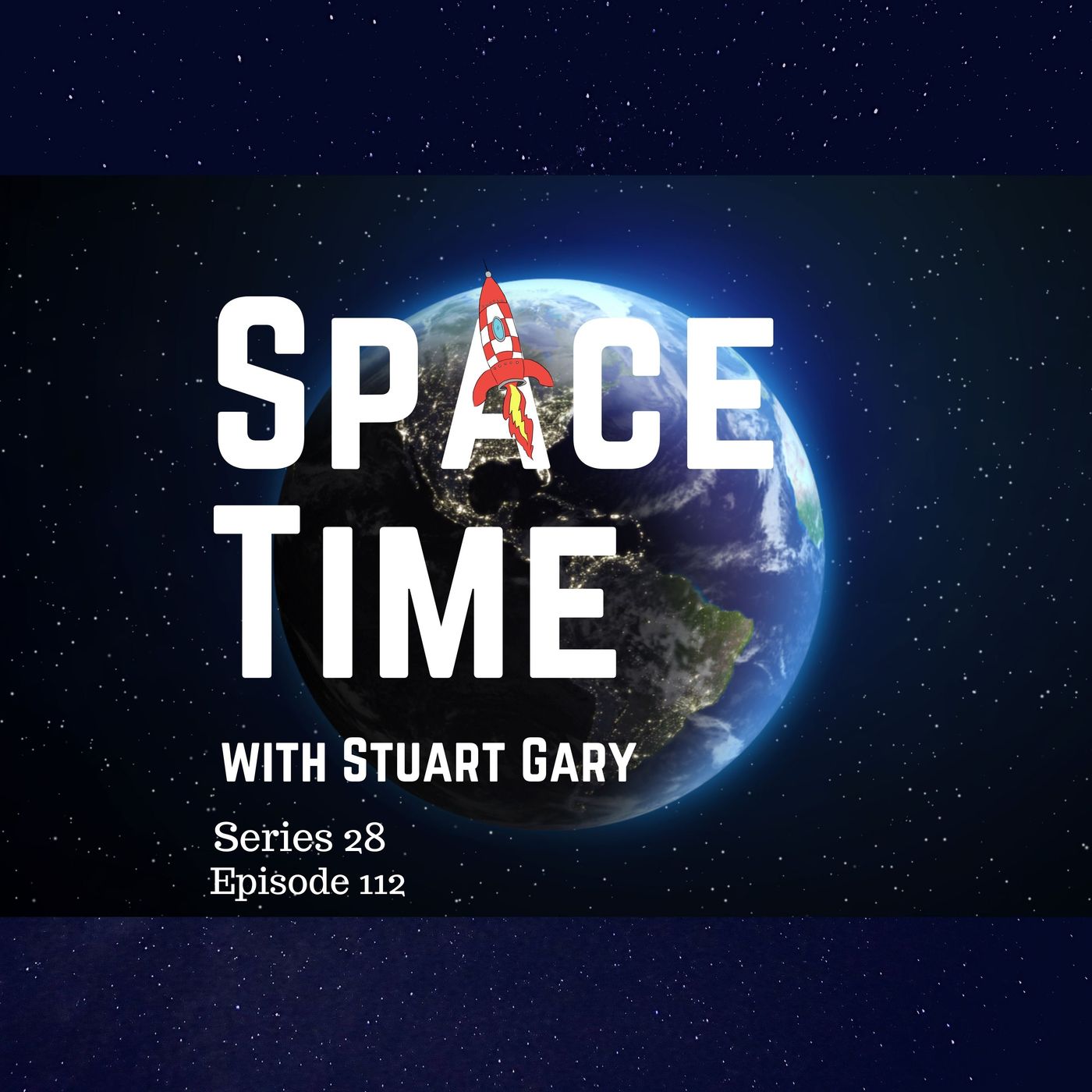
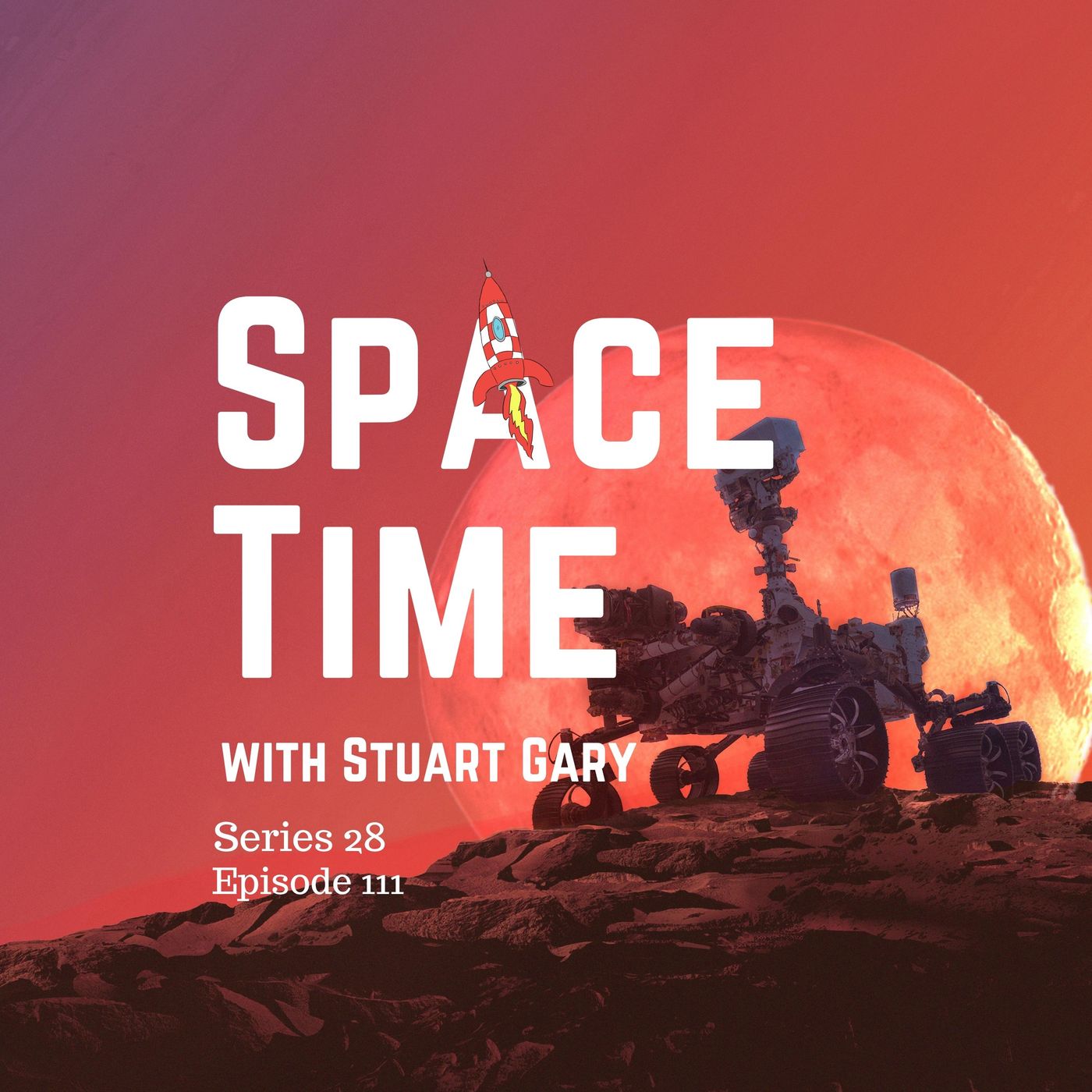
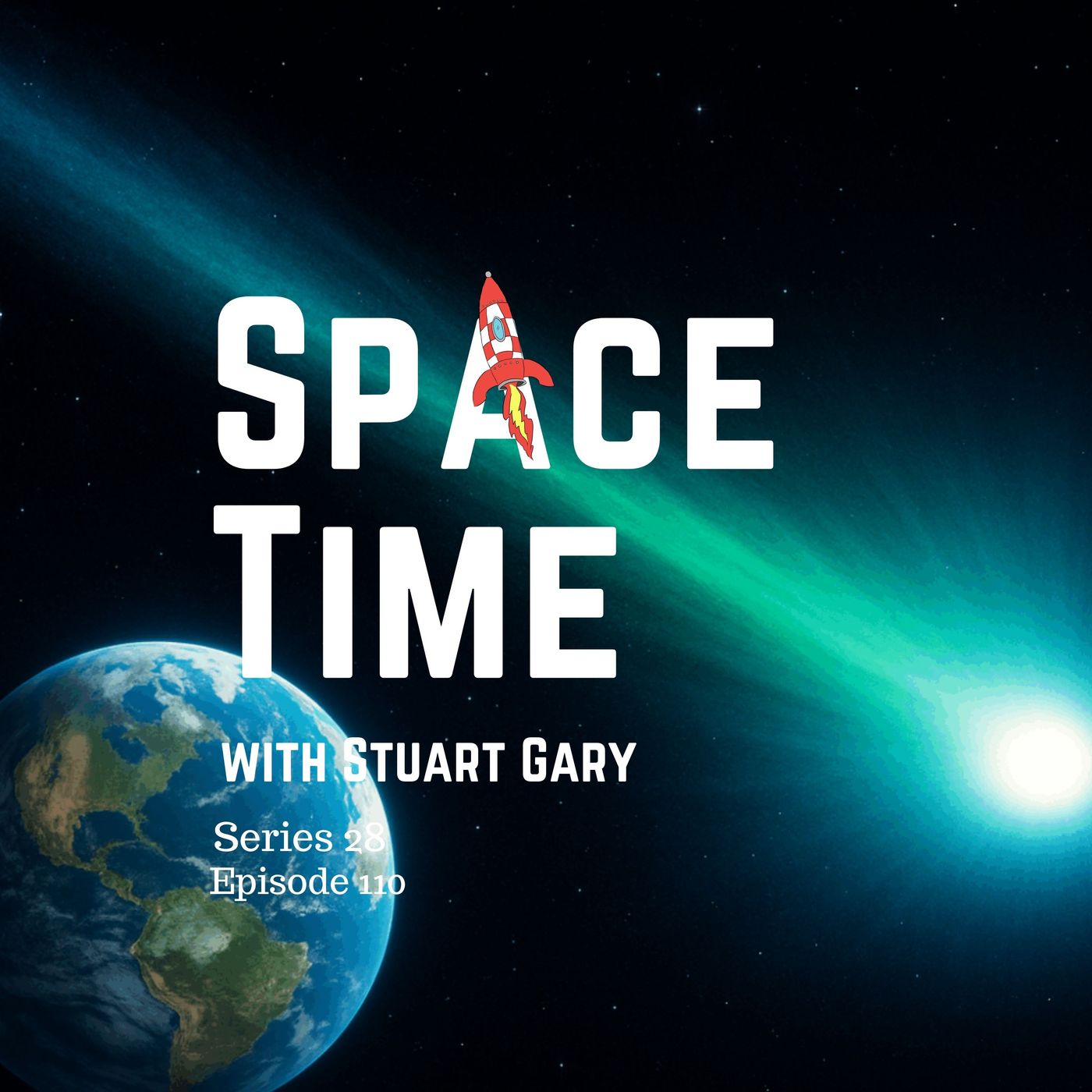
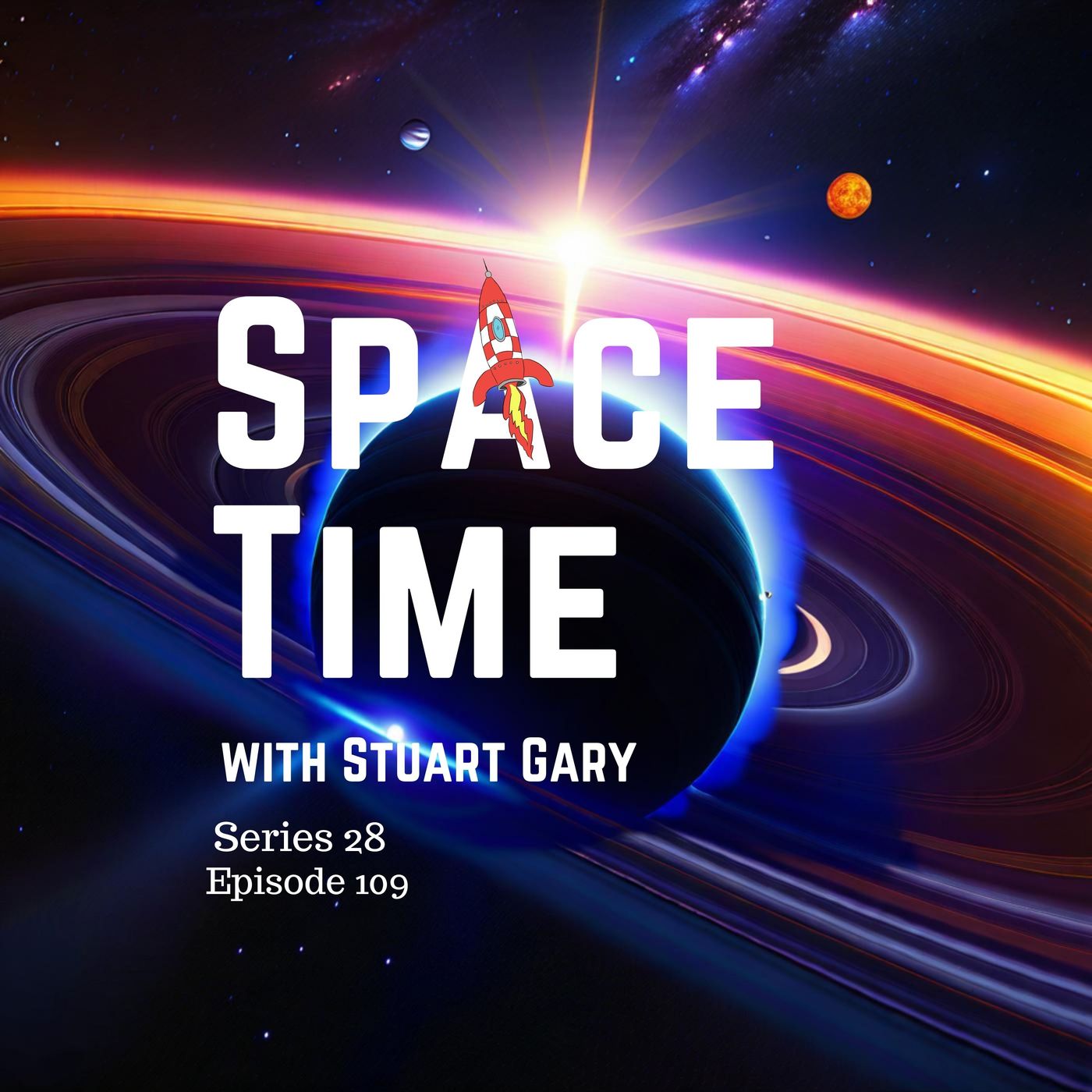
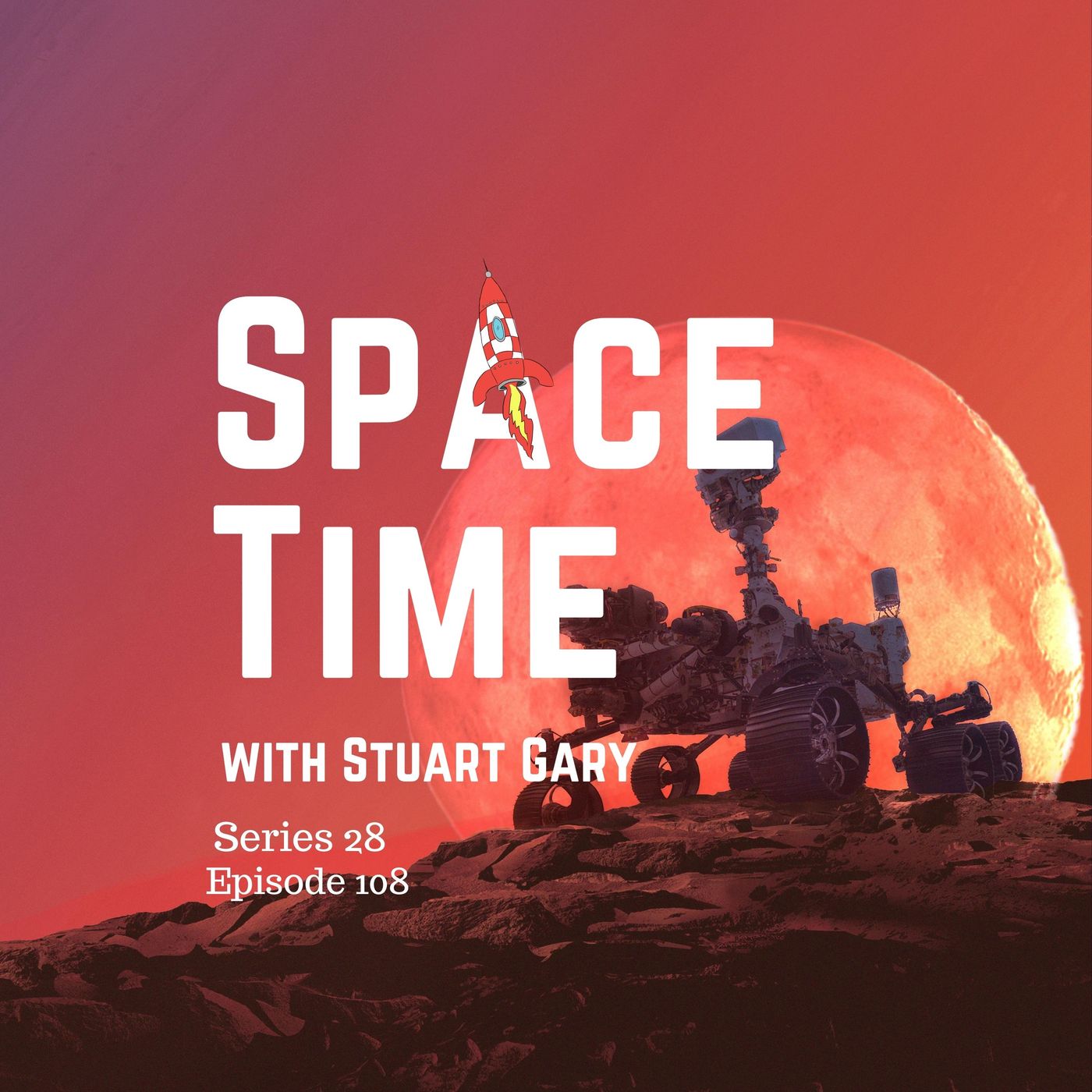
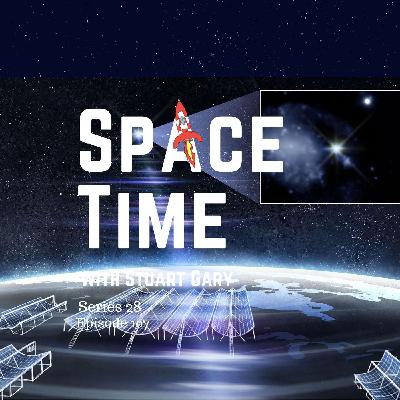
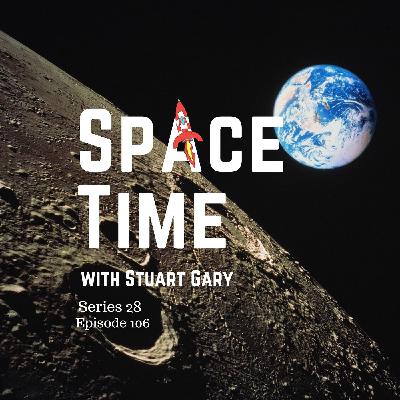



too many ads, duplicate ads, repetitive ads
duplicate ads that keep playing over and over again, may have to unsubscribe just because of the ads
i really don't want Microsoft looking at everything I do. it's not helpful to anyone but busy bodies.
if only scientists where as critical of capitalism or politics in general as of misinformation. it is more convenient to consider an enemy you can defeat, than one who makes possible your survival within the system. so scientists sound towards politics as they did towards religion when such was the dominant force. they hide their criticism so they can do their work, even though they do not believe in that system. it is not a system led by scientists, but by force of opinion.
The Australian Sceptic on this podcast is a misinformation and conspiracy nut, he thinks he is educating the audience with his insights and brilliant deductions. Gary should tell him to go away or stick to statistical proof provable facts without opinions
your idiotic, trump-ish Covid "science news" was bad enough now attacking young activists for their peers allegedly not wanting to eat a product that doesn't exist is next level. science smart you are definitely not. bye bye fool.
loved it
very informative , well done, I listen to every single one with great pleasure